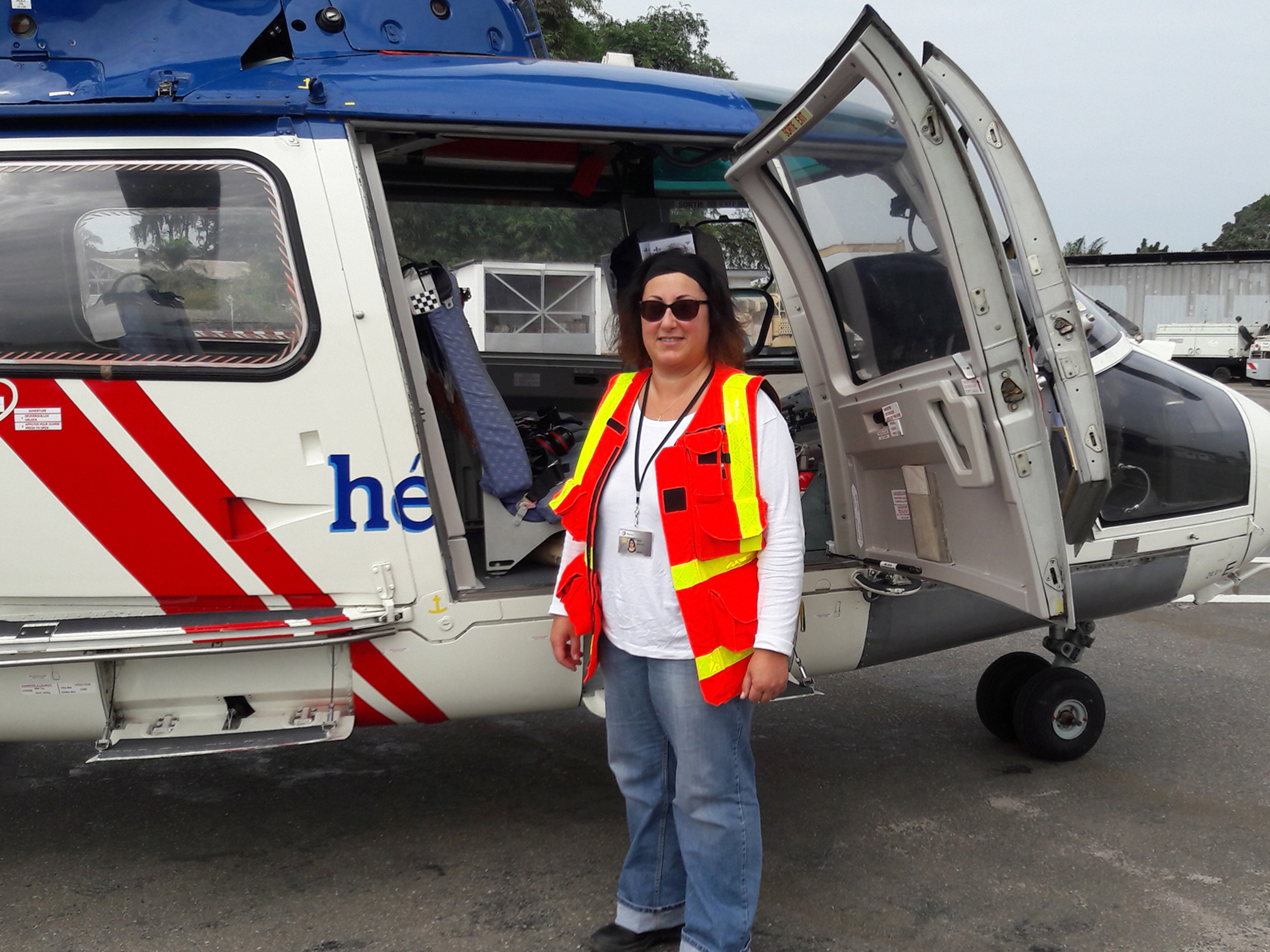The Challenges of Occupational Health and Safety Prevention
Interview with Nathalie THEUILLON, Operations Director of AMS in Guinea & Senegal.
Mrs. Theuillon, you want to talk to us about health and safety prevention at work. What are the challenges of occupational health and safety?
The challenges of prevention are both human and economic.
Human, because they directly impact the daily lives of workers and their families. A worker who is a victim of an occupational accident or illness suffers both physically and psychologically. They may have residual pain from the accident, medical vulnerabilities with chronic illnesses, or a disability requiring physical rehabilitation or professional redeployment.
The consequences extend into social and private life: family issues, loss of self-esteem, job loss, and financial instability for the family unit.
This brings us to the economic challenges, not only on a personal level, as we just discussed, but also at the company level.
For reference, the annual cost of work-related accidents worldwide represents a financial volume of $1,250,000,000. This accounts for 4.2% of global GDP lost due to work-related accidents and illnesses.
Without a prevention policy, companies must absorb direct and immediate costs such as medical expenses, daily allowances, pensions, and retirements. There are also indirect yet significant costs, including employee replacement, production halts, social unrest, and administrative management time for accidents. Not to mention the impact on the company’s reputation.
Today, companies model their economic development to optimize production and efficiency in different departments. Cost and profitability are frequent concerns. Is prevention cost-effective?
Preventive measures are often perceived as a cost that is difficult to bear during times of crisis. However, all studies show that prevention is not an obstacle to economic efficiency but rather a time saver and a productivity boost that opens up new markets.
Moreover, let’s not forget that prevention is a legal and regulatory obligation set by the International Labour Organization (ILO), labor laws, and labor inspections. But it is also a key driver for improving overall company performance:

- Social performance: image, social dialogue, absenteeism
- Economic performance: productivity, efficiency, revenue
- Operational performance: efficiency, quality
Key HSE Figures and Trends
According to data from the International Social Security Association (ISSA):
- 71% of productivity gains come from improved efficiency.
- 76% of prevention actions have a positive impact on quality.
- 10% of gains result from revenue growth linked to new business opportunities.
According to the European Agency for Safety at Work:
- For every €1 invested in occupational risk prevention, companies gain between €2.4 and €4.8 per year per employee.
- For every €1 invested in psychosocial risk prevention (PSR), companies gain €13 per year per employee.
Does this mean that occupational health and safety prevention is accessible to all companies?
Many companies believe that prevention is only affordable for multinationals, but this is false!
- The average cost of a prevention action (training, audit, equipment) ranges between €1,500 and €17,000.
- 30% of productivity gains cover two-thirds of prevention costs.
- The remaining third is fully amortized within 1.5 years.
How can prevention actions be implemented in a company?
Prevention actions often begin with a QUALITY AUDIT to assess the current situation, followed by an action plan to implement corrective measures.
Integrating your company into a Health and Safety Prevention Plan lays a solid foundation for obtaining ISO 9001 certification. ISO 9001 is the easiest certification to obtain with proper guidance, but AMS also recommends ISO 45001 certification, which specifically addresses occupational health and safety and is highly valued by international partners.
Then, there’s EMPLOYEE TRAINING!
Training is a major prevention tool in companies and the easiest to implement, with an immediate impact on health and safety.
For example, training employees as “Workplace First Responders” is the foundation for embedding a health and safety culture within a company.
How can AMS support companies in implementing health and safety prevention?
AMS has highly qualified and versatile personnel. Its dual expertise in both medical and HSE fields is a valuable asset for our partners. AMS can support companies through various missions related to health, risk management, and quality, including:
- Quality audit of the company’s medical and HSE sectors
- Implementation of a Prevention Action Plan
- Risk assessment studies and drafting of the DUERP (Occupational Risk Assessment Document)
- HSE training: Introduction to HSE culture, risk management principles
- Certified Workplace First Responder (SST) training
We recently learned that AMS has been certified for three years by the INRS. Can you tell us more about this?
Indeed, as part of expanding our service offering, we have prioritized upskilling our teams through training.
AMS has undertaken a certification process, particularly concerning Workplace First Responder training.
We currently have two INRS-certified trainers under the AFNOR framework. Our training program follows strict regulatory and standardized guidelines. The training is available in both French and English. Our teams travel to client sites, but we also offer inter-company sessions during the day, at night, or even on weekends, depending on the client’s sector of activity.
Upon completion, each participant receives a Certified Training Certificate with a registration number recorded in the INRS PROPAV register. Additionally, our trainers are listed in the INRS database of accredited trainers.
AMS is available at all times, as we understand. Can you remind us how companies can request your services?
AMS has an emergency contact number available on our website www.santeams.com.
For inquiries or quotes, you can contact us at:
- +224 624 79 20 64
- contact@santeams.com
Thank you, Nathalie THEUILLON, for all this information. If you had to conclude in a few words…
Train yourself & train your teams!

